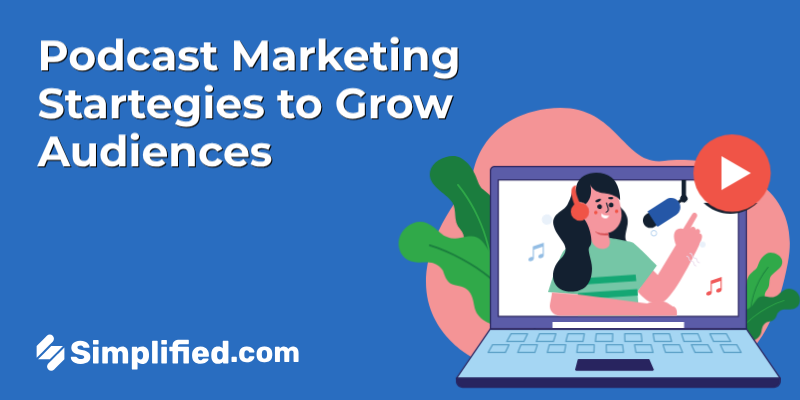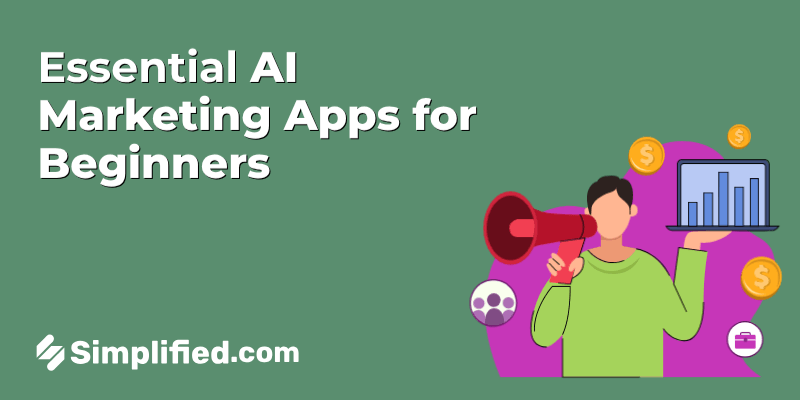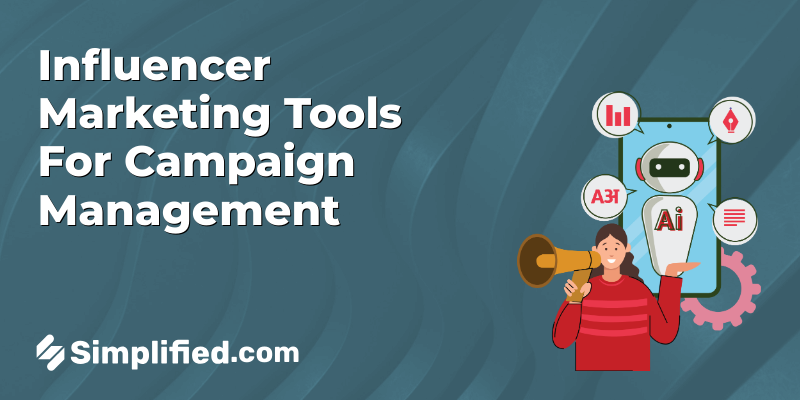
The podcasting world is booming in 2025, but let’s face it: standing out in a sea of content can feel like trying to shout over a crowd of millions. With new podcasts launching every day and listeners constantly being bombarded with choices, how can your marketing podcast rise above the noise?
Well, it’s time to think beyond the old-school marketing tactics and embrace more innovative podcast marketing strategies. Traditional approaches like just posting on social media or hoping your podcast gets discovered through word of mouth aren’t cutting it anymore. The podcasting world is evolving, and so should your podcast marketing strategy.
In this guide, we’ll break down 8 innovative tactics you can use to capture attention, build a loyal audience, and set your podcast apart in 2025.
8 Outstanding Podcast Marketing Strategies
Strategy 1: Sonic Branding Takeovers
In 2025, sonic branding is key to making your podcast unforgettable. A distinctive sound or ‘earworm’ creates a strong connection, helping listeners instantly recognize your show. Sounds can trigger stronger memory recall than visuals, making your podcast more memorable.
This is a powerful podcast marketing strategy, as it enhances your brand’s presence and contributes to long-term audience loyalty. Incorporating such podcast marketing strategies will ensure your show stands out in a competitive market.
Why it works:
A catchy audio signature sticks with listeners, increasing the chances they’ll return to your podcast.
Real-Life Example:
The Daily by The New York Times uses a 3-second audio signature that helped multiply their audience five times, as listeners quickly associate the sound with the show’s high-quality content.
Bonus: 100+ Captivating Podcast Name Ideas to Inspire Your Next Show
Strategy 2: Listener Story Harvesting
Turning your audience into content creators can lead to authentic, powerful content that resonates deeply. By inviting listeners to share their stories or experiences, you can generate unique, relatable content that engages other listeners.
How it works:
Creating platforms like a “story hotline” or encouraging listener-submitted voice notes allows your audience to become co-creators. These stories can then be featured in episodes, sparking viral engagement.
Real-Life Example:
The podcast Call Her Daddy used listener-submitted questions and stories to fuel episodes, boosting engagement and creating viral clips. This approach taps into emotional resonance, proving that authenticity often beats polished production value.
Strategy 3: Platform-Specific Content Bombs
One-size-fits-all promotion is a thing of the past. In 2025, creating platform-native content that aligns with each platform’s unique features and audience is essential for maximizing reach. By adapting your podcast content for different platforms, you can increase your chances of being rewarded by algorithms and gaining more exposure.
How it works:
Instead of promoting the same content across every platform, tailor your promotional materials to fit the format of each one. For example, you could post long-form content on YouTube, short video snippets on Instagram, and threaded conversations on Twitter. This creates multiple promotional assets from a single episode.
Real-Life Example:
Take The Joe Rogan Experience, for instance. The Joe Rogan Experience takes key moments from long episodes and turns them into viral clips . These snippets attract new listeners who then check out the full podcast.
Bonus: 5 Tips for Writing a Killer Podcast Description
Strategy 4: Collaborating with Micro-Influencers
Rather than focusing solely on celebrity guests, consider working with micro-influencers. These are individuals with a smaller but highly engaged following. Their audience trusts their recommendations more, which can help attract new listeners to your podcast.
How it works:
Identify influencers whose interests align with your podcast. Partnering with them allows you to tap into their niche audience, where listeners are more likely to engage with your content.
Real-Life Example:
The Skinny Confidential Him & Her Podcast collaborated with influencers in the wellness space. By joining smaller podcasts and engaging with their followers, they expanded their reach and brought in new listeners.
Strategy 5: Trailer Previews
Instead of just promoting episodes with standard text or images, use episode trailers. These brief, engaging previews give potential listeners a taste of what’s coming, sparking interest before the full episode is released.
How it works:
Create short trailers that highlight key moments or topics in the upcoming episode. The goal is to make listeners curious, so they feel compelled to listen when the full episode drops.
Real-Life Example:
The Michelle Obama Podcast created a short trailer for its first episode, giving listeners a sneak peek into the conversation. This podcast marketing strategies led to a strong launch, with many people tuning in as soon as the episode was available.
Bonus: How to Grow Your Podcast Using TikTok and Instagram
Strategy 6: Community Challenges
Engage your listeners in a fun and interactive way by creating community challenges. This podcast marketing strategy turns your audience from passive listeners into active participants who share and promote your podcast within their own networks.
How it works:
Host challenges that tie into your podcast themes. For example, ask your audience to share their own stories related to an episode’s topic, or create a challenge based on a specific hashtag. Reward the best entries with shoutouts or exclusive content to encourage more involvement.
Real-Life Example:
The Tim Ferriss Show frequently engages its audience with challenges that encourage listeners to share their personal productivity hacks. This not only creates excitement but also encourages the community to promote the podcast among their friends and followers.
Strategy 7: Contextual Distribution
Instead of just relying on broad distribution, consider placing your podcast in places where your target audience is already engaged. Think about the context of when and where your content will resonate best, and use that information to choose the right channels for promotion.
How it works:
For example, if your podcast is about parenting, distribute it on platforms or forums where parents are likely to be active, like parenting groups on Facebook or Instagram. Timing also matters: release content at peak times when your audience is more likely to listen.
Real-Life Example:
The Mom Hour Podcast strategically places their content on parenting forums, Facebook groups, and related platforms. They’ve seen a significant rise in listeners by targeting the right context, showing that timely, relevant placement can attract more listeners.
Bonus: AI Podcast Clips Get 5x More Views and Shares—Here’s How
Strategy 8: Exclusive “Audio Experiences”
Create unique audio experiences that can only be found in your podcast. Offering something exclusive builds anticipation and keeps listeners coming back for more.
How it works:
Consider integrating elements like ASMR, multi-layered sound designs, or even 3D audio to make your podcast more immersive. These elements provide an experience that regular audio content can’t offer, making your podcast stand out from others.
Real-Life Example:
Welcome to Night Vale, a popular fiction podcast, utilizes unique audio effects and immersive storytelling to create an engaging experience. This distinctive approach has attracted a loyal following that eagerly awaits every episode.
Conclusion
As podcasting grows in 2025, standing out requires more than just great content. By adopting innovative podcast marketing strategies like AI-powered audience matching, immersive experiences, and community-driven content, you can build a loyal, engaged audience. These strategies will help you create lasting connections and make your marketing podcast stand out in an increasingly crowded space.
Measuring Success
Track listener engagement, shares, and audience growth to gauge the success of these strategies. Use analytics and feedback to refine your approach and ensure continuous improvement.
Looking Ahead
The podcast landscape will keep evolving. Stay on top of new trends and adapt to emerging technologies to keep your content fresh and engaging.
With these strategies, you’re equipped to make your podcast thrive in 2025 and beyond.

























